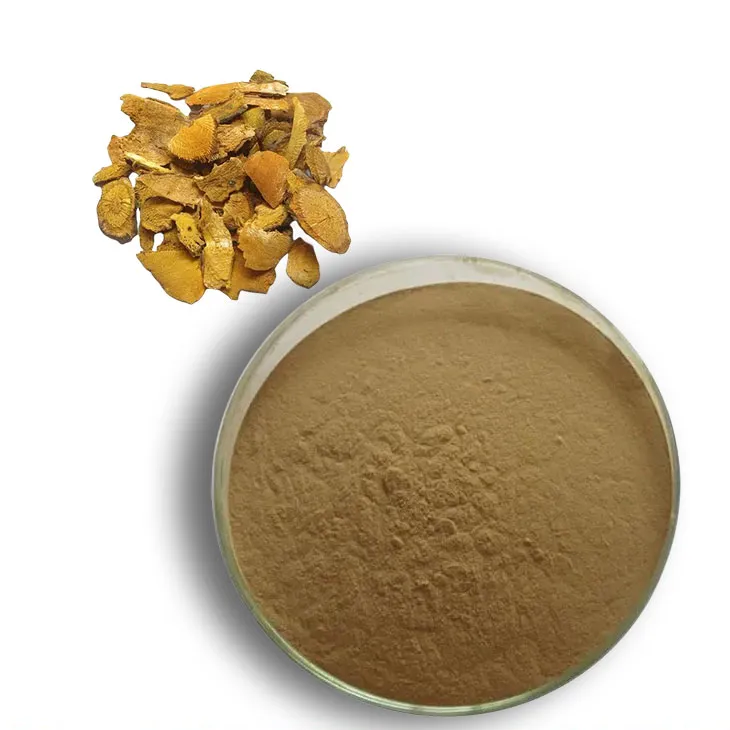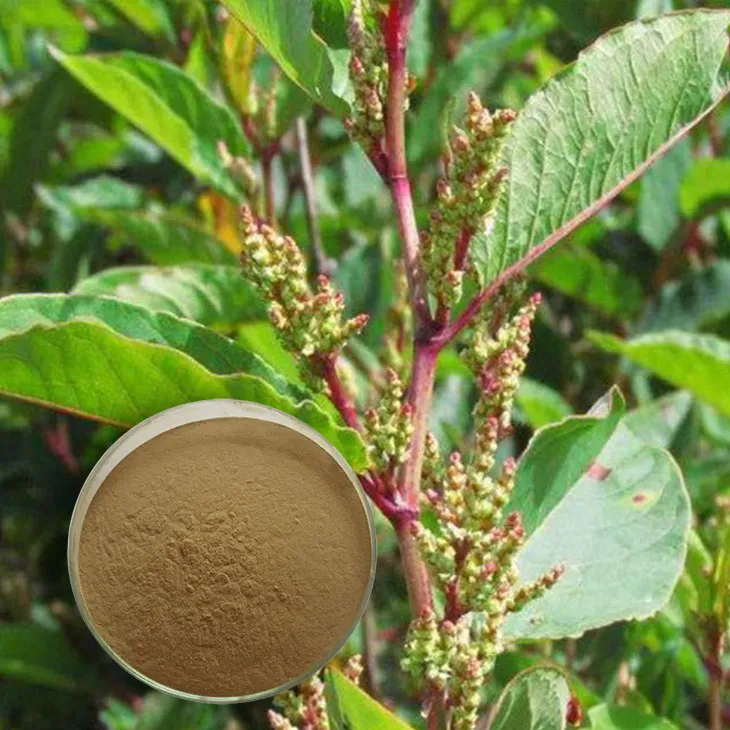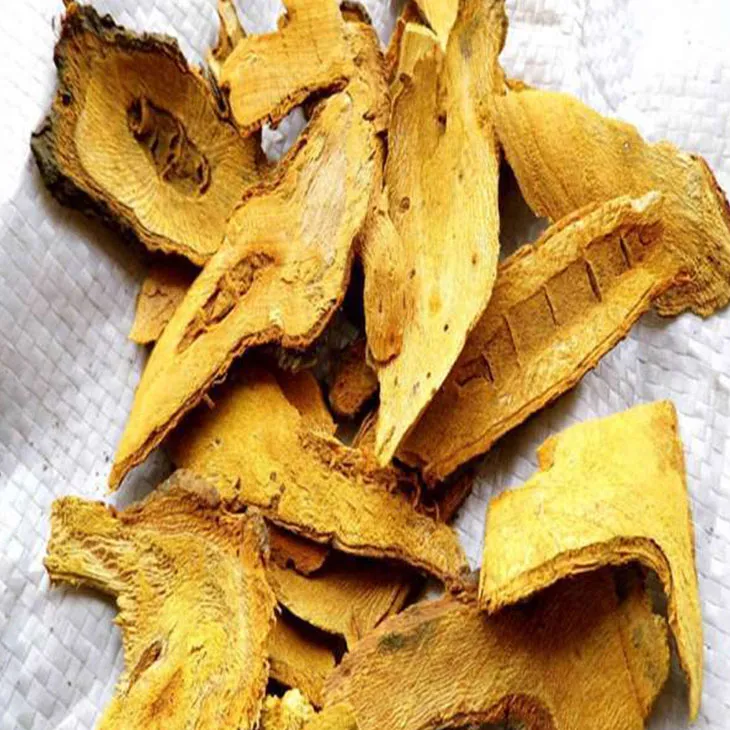- 0086-571-85302990
- sales@greenskybio.com
Organic supercritical CO₂ extraction of Polygonum cuspidatum extract.
2024-11-27

1. Introduction
Polygonum cuspidatum, also known as Japanese knotweed, is a plant rich in various bioactive compounds. Supercritical CO₂ extraction has emerged as a promising method for obtaining high - quality extracts from this plant. This extraction technique takes advantage of the unique properties of CO₂ in its supercritical state. In this state, CO₂ has properties between those of a gas and a liquid, which makes it an excellent solvent for extracting a wide range of compounds from plant materials.

2. The Supercritical State of CO₂
2.1 Properties of Supercritical CO₂
Supercritical CO₂ has several remarkable properties. It has a low viscosity, similar to that of a gas, which allows it to easily penetrate the plant matrix of Polygonum cuspidatum. At the same time, it has a relatively high density, approaching that of a liquid, enabling it to dissolve a variety of compounds effectively. The critical temperature and pressure of CO₂ are relatively easy to achieve in industrial settings. The critical temperature of CO₂ is around 31.1 °C, and the critical pressure is about 73.8 bar. These conditions can be precisely controlled in extraction equipment, ensuring the efficient extraction of the desired compounds from Polygonum cuspidatum.2.2 Advantages over Conventional Solvents
Compared to traditional organic solvents such as hexane or ethanol, supercritical CO₂ offers several advantages. Firstly, it is non - toxic, non - flammable, and environmentally friendly. This is of great significance in the production of natural extracts, especially for applications in the food and nutraceutical industries. Secondly, it can be easily removed from the extract after extraction, leaving no solvent residues. This ensures the purity and safety of the final product. Additionally, supercritical CO₂ can be recycled in the extraction process, reducing the cost and environmental impact associated with solvent disposal.
3. Compounds in Polygonum cuspidatum
3.1 Flavonoids
Flavonoids are one of the major groups of bioactive compounds in Polygonum cuspidatum. These compounds have antioxidant, anti - inflammatory, and anti - cancer properties. Examples include resveratrol, which has received significant attention in recent years due to its potential health benefits. Supercritical CO₂ extraction is particularly suitable for isolating flavonoids from Polygonum cuspidatum because it can selectively extract these compounds while minimizing the extraction of unwanted substances.3.2 Phenolic Acids
Phenolic acids are also present in Polygonum cuspidatum. They contribute to the antioxidant and antimicrobial activities of the plant extract. Compounds such as caffeic acid and ferulic acid are important phenolic acids in Polygonum cuspidatum. Supercritical CO₂ extraction can effectively dissolve and isolate these phenolic acids, maintaining their bioactivity during the extraction process.
4. The Process of Supercritical CO₂ Extraction
4.1 Pretreatment of Polygonum cuspidatum
Before extraction, Polygonum cuspidatum needs to be properly pretreated. This usually involves drying and grinding the plant material to a suitable particle size. Drying helps to remove moisture, which can interfere with the extraction process. Grinding the plant material into a fine powder increases the surface area available for extraction, enhancing the efficiency of the supercritical CO₂ extraction.4.2 Extraction Parameters
- Pressure: The pressure is a crucial parameter in supercritical CO₂ extraction. Generally, a pressure range of 100 - 300 bar is often used for extracting compounds from Polygonum cuspidatum. Higher pressures can increase the solubility of the target compounds in CO₂, but excessive pressure may also lead to the extraction of unwanted impurities.
- Temperature: The temperature also affects the extraction efficiency. A temperature range of 40 - 60 °C is commonly employed. Higher temperatures can enhance the diffusivity of CO₂, but they may also cause the degradation of heat - sensitive compounds. Therefore, the optimal temperature needs to be carefully determined based on the nature of the target compounds.
- Flow Rate of CO₂: The flow rate of CO₂ determines the mass transfer rate during extraction. A suitable flow rate ensures that the CO₂ can effectively contact the plant material and dissolve the target compounds. Too high or too low a flow rate may result in incomplete extraction or the extraction of non - target compounds.
- Extraction Time: The extraction time varies depending on the nature of the plant material and the target compounds. For Polygonum cuspidatum, an extraction time of 1 - 3 hours is often sufficient to obtain a satisfactory extract. However, longer extraction times may be required for higher yields or more complete extraction of certain compounds.
4.3 Separation and Collection of the Extract
After the extraction process, the supercritical CO₂ containing the dissolved compounds needs to be separated from the extract. This is usually achieved by reducing the pressure and temperature of the CO₂, which causes it to return to a gaseous state, leaving the extract behind. The extract can then be collected and further processed, such as drying or formulation into final products.5. Selectivity of Supercritical CO₂ Extraction
One of the most important features of supercritical CO₂ extraction is its selectivity. By adjusting the extraction parameters such as pressure, temperature, and the addition of modifiers (such as small amounts of ethanol), it is possible to selectively extract specific compounds from Polygonum cuspidatum. For example, if the goal is to extract flavonoids with high purity, the extraction conditions can be optimized to favor the solubility of flavonoids while suppressing the extraction of other compounds. This selectivity is crucial for obtaining extracts with high bioactivity and specific therapeutic properties. It also allows for the fractionation of the extract, separating different groups of compounds for further study or different applications.
6. Product Quality
6.1 Purity and Composition
Supercritical CO₂ extraction results in extracts with high purity. Since CO₂ can be easily removed from the extract, there are no solvent residues, which is beneficial for applications in the food, pharmaceutical, and nutraceutical industries. The composition of the extract can be precisely controlled by adjusting the extraction parameters, ensuring that the desired compounds are present in the appropriate concentrations.6.2 Bioactivity Preservation
As mentioned earlier, supercritical CO₂ extraction is gentle on heat - sensitive compounds. This means that the bioactivity of the compounds in Polygonum cuspidatum, such as the antioxidant and anti - inflammatory activities of flavonoids and phenolic acids, is well - preserved during the extraction process. This is in contrast to some traditional extraction methods that may cause the degradation of these bioactive compounds due to high temperatures or the use of harsh solvents.7. Industrial Application and Scalability
7.1 Nutraceutical Industry
In the nutraceutical industry, the extracts of Polygonum cuspidatum obtained by supercritical CO₂ extraction are highly valued. These extracts can be used as dietary supplements due to their rich content of bioactive compounds. For example, resveratrol - rich extracts can be formulated into capsules or tablets for consumers seeking health - promoting products. The clean and pure nature of the extracts obtained by supercritical CO₂ extraction makes them ideal for this type of application.7.2 Traditional Medicine
Polygonum cuspidatum has a long history of use in traditional medicine. Supercritical CO₂ extraction can provide high - quality extracts that can be further developed into traditional medicine products. These extracts can be used in the form of tinctures, powders, or as ingredients in herbal formulations. The ability to scale up the extraction process is crucial for meeting the growing demand for traditional medicine products based on Polygonum cuspidatum.7.3 Scalability
Supercritical CO₂ extraction is highly scalable. Industrial - scale extraction equipment can be designed and built to handle large - volume production. This is important for commercial applications, as it allows for the cost - effective production of Polygonum Cuspidatum Extracts to meet the market demand. The scalability also enables continuous improvement in the extraction process, such as optimizing extraction parameters for higher yields and better product quality.8. Conclusion
The organic supercritical CO₂ extraction of Polygonum Cuspidatum Extract is a highly promising technique. It offers numerous advantages, including selectivity, high product quality, and scalability. This extraction method is well - suited for isolating valuable bioactive compounds such as flavonoids and phenolic acids from Polygonum cuspidatum. With the increasing demand for natural products in various industries, supercritical CO₂ extraction of Polygonum Cuspidatum Extract is likely to play an increasingly important role in the future. However, further research is still needed to fully optimize the extraction process and explore new applications of the obtained extracts.
FAQ:
What are the main advantages of organic supercritical CO₂ extraction for Polygonum cuspidatum extract?
The main advantages include selectivity, which can isolate key components such as flavonoids and phenolic acids. It also maintains product quality by reducing the degradation of heat - sensitive compounds. Moreover, from an industrial aspect, it is scalable to meet the increasing demand in sectors like nutraceuticals and traditional medicine.
What compounds in Polygonum cuspidatum can be extracted by supercritical CO₂?
Flavonoids and phenolic acids are among the key compounds in Polygonum cuspidatum that can be extracted by supercritical CO₂.
How does supercritical CO₂ penetrate the plant matrix of Polygonum cuspidatum?
Supercritical CO₂ has unique physical properties that allow it to penetrate the plant matrix of Polygonum cuspidatum. In its supercritical state, it has a high diffusivity and low viscosity, which enables it to effectively reach and dissolve the target compounds within the plant matrix.
Why is supercritical CO₂ extraction considered good for product quality in the case of Polygonum cuspidatum extract?
Supercritical CO₂ extraction is good for product quality because it reduces the degradation of heat - sensitive compounds present in Polygonum cuspidatum. The relatively mild extraction conditions compared to some traditional extraction methods help preserve the integrity of these compounds.
Is supercritical CO₂ extraction cost - effective for industrial - scale production of Polygonum cuspidatum extract?
Yes, supercritical CO₂ extraction is scalable for industrial production. While the initial investment for the equipment may be significant, in the long run, it can be cost - effective as it can meet the growing demand efficiently, and also due to its advantages in terms of product quality and selectivity, which can add value to the final product.
Related literature
- “Supercritical Fluid Extraction of Bioactive Compounds from Polygonum cuspidatum: A Review”
- “Optimization of Supercritical CO₂ Extraction of Polygonum cuspidatum Extract for Enhanced Antioxidant Activity”
- ▶ Hesperidin
- ▶ Citrus Bioflavonoids
- ▶ Plant Extract
- ▶ lycopene
- ▶ Diosmin
- ▶ Grape seed extract
- ▶ Sea buckthorn Juice Powder
- ▶ Fruit Juice Powder
- ▶ Hops Extract
- ▶ Artichoke Extract
- ▶ Mushroom extract
- ▶ Astaxanthin
- ▶ Green Tea Extract
- ▶ Curcumin
- ▶ Horse Chestnut Extract
- ▶ Other Product
- ▶ Boswellia Serrata Extract
- ▶ Resveratrol
- ▶ Marigold Extract
- ▶ Grape Leaf Extract
- ▶ New Product
- ▶ Aminolevulinic acid
- ▶ Cranberry Extract
- ▶ Red Yeast Rice
- ▶ Red Wine Extract
-
Quercetin
2024-11-27
-
Europen Bilberry Extract
2024-11-27
-
Rose Hip Extract
2024-11-27
-
Bamboo Leaf extract
2024-11-27
-
Troxerutin
2024-11-27
-
Curcumin Extract
2024-11-27
-
Cocoa Extract
2024-11-27
-
Eyebright Extract
2024-11-27
-
Almond Extract Powder
2024-11-27
-
Chasteberry Extract
2024-11-27





















